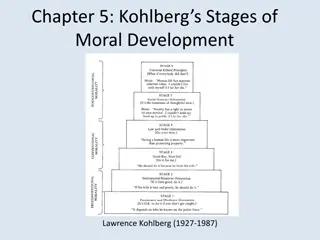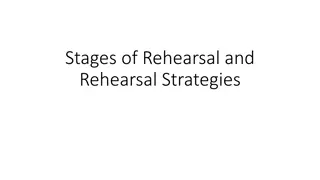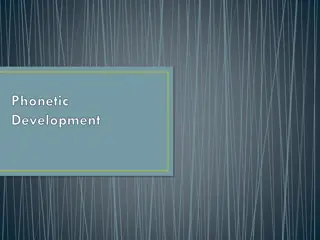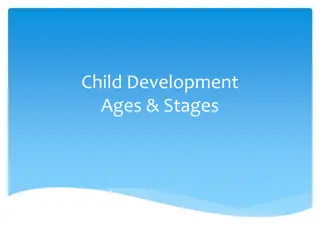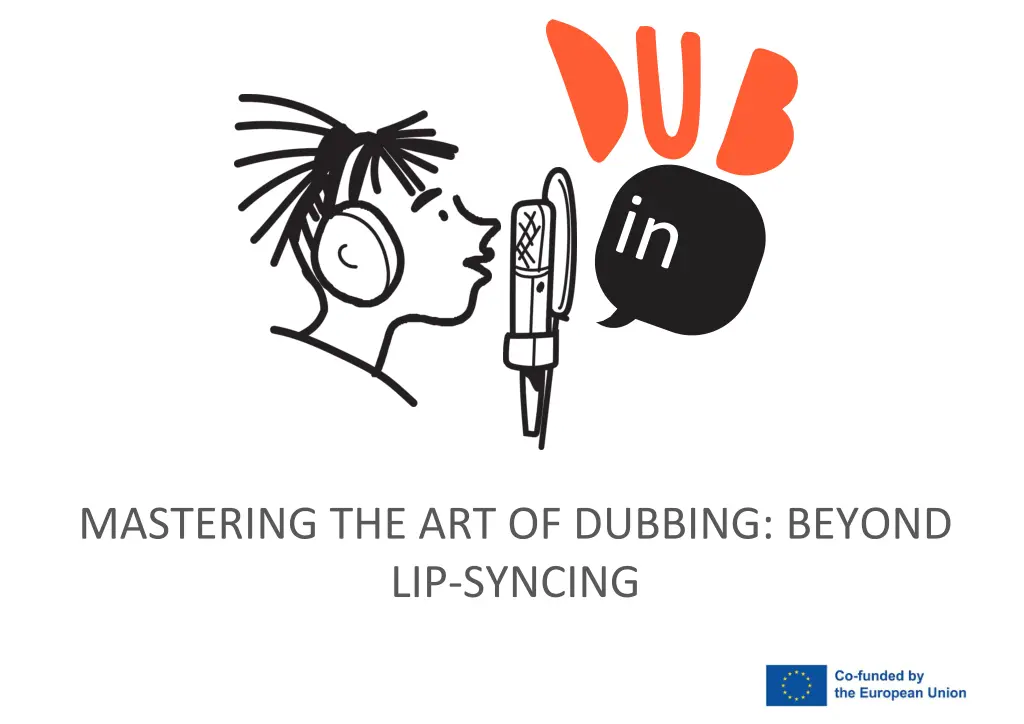
Mastering the Art of Dubbing: Techniques and Importance
Explore the nuances of dubbing beyond lip-syncing, emphasizing the necessity to synchronize dialogue with on-screen performances. Learn about translation stages, timing importance, and the educational potential of voices in dubbing.
Download Presentation

Please find below an Image/Link to download the presentation.
The content on the website is provided AS IS for your information and personal use only. It may not be sold, licensed, or shared on other websites without obtaining consent from the author. If you encounter any issues during the download, it is possible that the publisher has removed the file from their server.
You are allowed to download the files provided on this website for personal or commercial use, subject to the condition that they are used lawfully. All files are the property of their respective owners.
The content on the website is provided AS IS for your information and personal use only. It may not be sold, licensed, or shared on other websites without obtaining consent from the author.
E N D
Presentation Transcript
MASTERING THE ART OF DUBBING: BEYOND LIP-SYNCING
INTRO Dubbing is a form of constrained translation that goes beyond the linguistic code. It involves recreating dialogue in the native language of the target audience, considering the performance of the actors on screen. Dubbing requires both translation and adaptation to ensure synchronization with the performer's actions and emotions.
THE TWO STAGES OF TRANSLATION In dubbing, there are two stages of translation: Translation of the text: Conveying the meaning of the original dialogue. Adaptation of the translated script: Matching the translated text to the on-screen performance.
TIMING IS EVERYTHING IN DUBBING Timing is crucial in dubbing as the voice actress/actor must match the duration of the line to the screen performer's actions. The volume of the voice should also correspond to the screen performer's performance. The rhythm and speed of speech within the line should follow the screen performer's tempo and mood. PICTURE BY: pexels-brett-sayles-4007613
CONSIDERING SCREEN PERFORMANCE The general screen performance of the actress/actor should be taken into account during the translation and adaptation process. Including pauses, reactions, physical interactions, and other non-verbal elements enhances the authenticity of the dubbed performance.
LIP-SYNCHRONIZATION AND BEYOND Lip-syncing is a key factor in dubbing, ensuring that the dubbed voice matches the lip movements of the screen actor/actress. However, a complete dubbing procedure should aim to match the whole performance of the screen actor/actress, not just the lips movements.
PEDAGOGICAL POWER OF THE VOICE The voice possesses a pedagogical force, as educators use their voices to convey messages and facilitate learning. While not the primary focus of DUB-IN, the educational potential of the voice should be considered.
CONCLUSION Dubbing is an art that requires skillful translation and adaptation to achieve perfect synchronization with the on-screen performance. By considering all aspects of the screen performance, dubbed materials can resonate more effectively with audiences worldwide. Mastering the art of dubbing goes beyond lip-syncing and involves conveying the emotions, expressions, and overall performance of the original actors. PICTURE BY: pexels-brett-sayles-4007613







